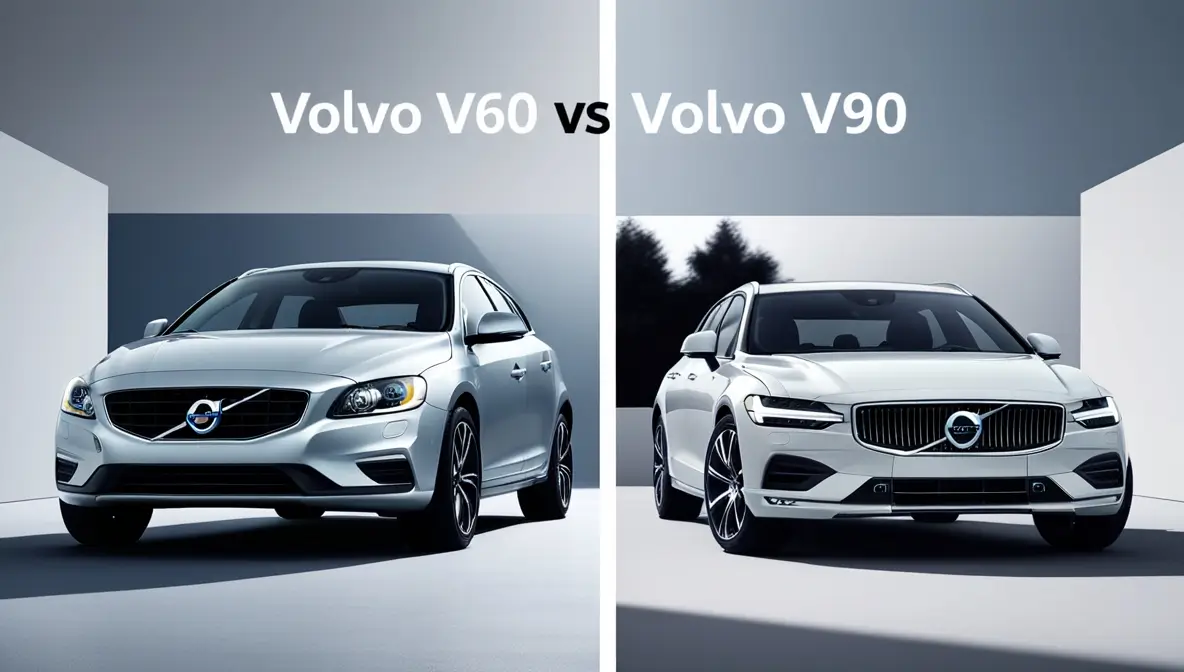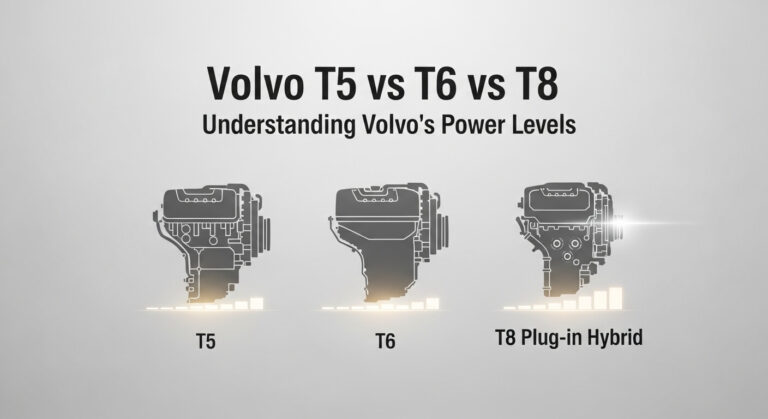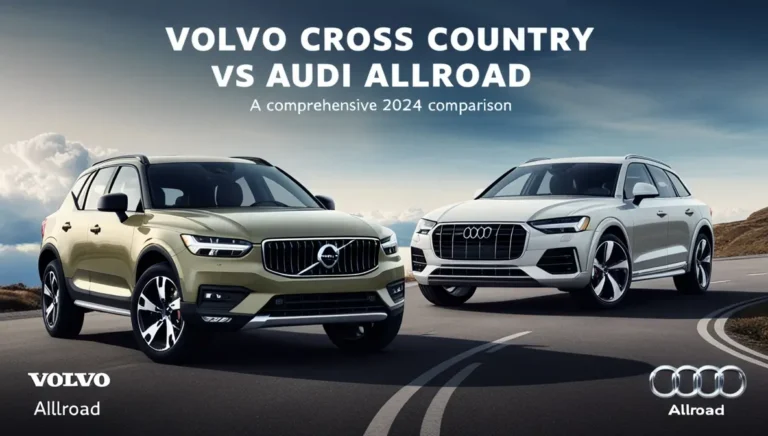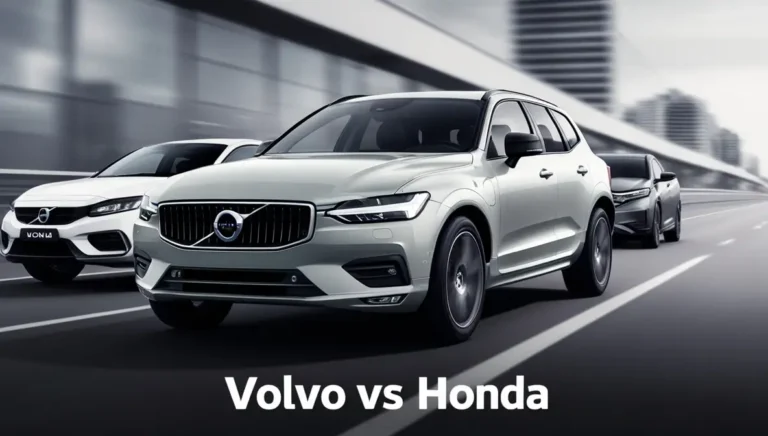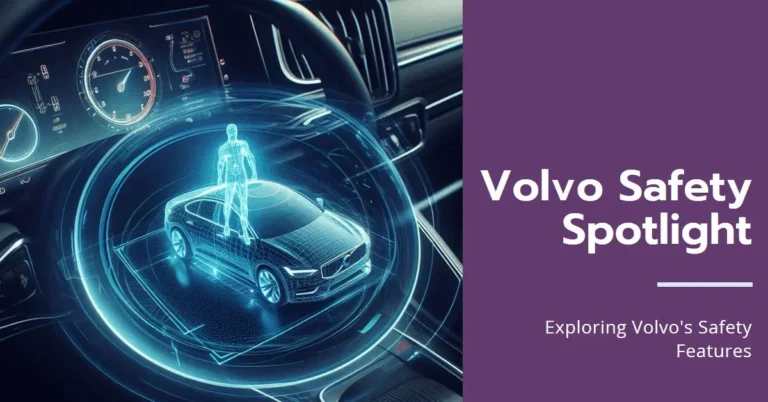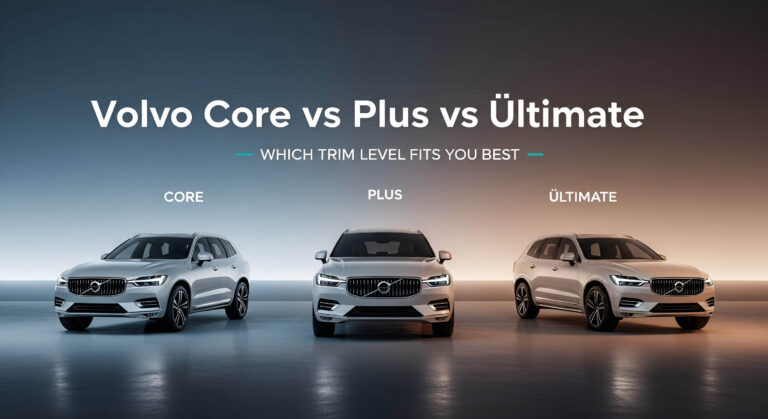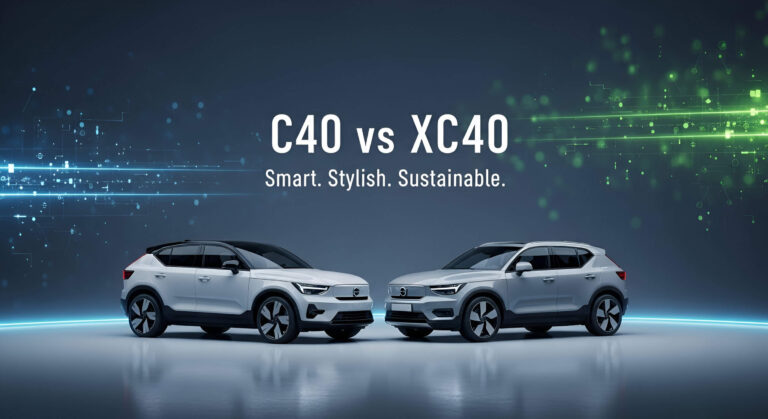Volvo V60 vs Volvo V90: Which Volvo Wagon Suits You Best?
Picture this: You’re cruising down a scenic coastal highway, surrounded by premium Swedish craftsmanship, with enough space for your weekend gear and favorite people. But which Volvo wagon should be your trusty companion on these adventures? Let’s dive into the ultimate showdown between the V60 and V90 to help you make that choice.
If you’re wondering about the main differences between these Swedish beauties, here’s the quick scoop: The V60 is the compact sports wagon for urban warriors who want agile handling and efficiency, while the V90 is the grand touring champion offering more space and comfort for those long-distance adventures. Surprisingly, the smaller V60 offers more cargo space when the seats are folded down!
Both models come with all-wheel drive options, perfect for those unexpected weather challenges or weekend camping trips!
Overview and Key Differences Between Volvo V60 and V90
Introduction to the Volvo V60 and V90 Models
Remember when station wagons were those boxy family haulers your parents drove? Well, these Volvos are nothing like that! Both models represent Volvo’s modern take on the luxury wagon, combining sleek Scandinavian design with practical functionality.
The V60 targets urban professionals and small families who want a premium driving experience without the bulk of an SUV. Think of it as the athletic younger sibling who excels at city parking and tight corners. The V90, meanwhile, is the sophisticated elder statesman, designed for those who prioritize space and grace over compact agility.
The “V” in V60 and V90 stands for “Versatility” – a nod to these wagons’ multi-purpose nature!
Key Specs and Dimensions
Let’s break down the numbers in a way that makes sense:
Feature Volvo V60 Volvo V90
Length 187.4 inches 194.3 inches
Width 72.8 inches 74.0 inches
Height 56.6 inches 58.1 inches
Cargo Space (seats down) 60.5 cubic feet 53.9 cubic feet
Here’s something that might surprise you: Despite being the smaller wagon, the V60 offers more cargo space with the seats folded down! It’s like having a TARDIS from Doctor Who – bigger on the inside than it appears outside.
The V90’s extra length translates to more legroom for rear passengers, making it ideal for families with teenagers or frequent adult passengers.
Performance and Engine Options
Engine Variants and Powertrain Options
Both wagons pack quite a punch under their sleek hoods. The V60 comes with two main options:
- T5: A peppy 2.0L turbocharged engine (250 hp)
- T8: A plug-in hybrid powerhouse combining electric and gas power (455 hp)
The V90, however, keeps it simpler with its B6 powertrain, delivering a robust 295 horsepower through a mild-hybrid system.
The V90 can tow up to 3,500 pounds – that’s like easily pulling a small boat or camping trailer!
Fuel Economy and Efficiency
Let’s talk about something we all care about – fuel efficiency:
- V60 (non-hybrid): Up to 31 mpg on highways
- V60 T8 (plug-in hybrid): An impressive 69 MPGe
- V90: A respectable 29 mpg highway
The V60’s plug-in hybrid option could save significant fuel costs if your daily commute falls within its electric range!
Driving Experience and Ride Quality
Ever tried to compare a figure skater to a ballroom dancer? That’s kind of what we’re looking at here. The V60, like our figure skater, offers nimble handling and quick responses, making it a joy to navigate through city streets and tight parking spots.
The V90, our ballroom dancer, glides over road imperfections gracefully. Its longer wheelbase means you’ll feel floating on a Swedish cloud, especially on those long highway stretches.
If you frequently navigate city parking or tight spaces, the V60’s shorter length could save you countless three-point turns!
Interior Design and Comfort
Cabin and Seating Features
Let’s talk about where you’ll spend most of your time – inside these beautiful machines. Both wagons showcase Volvo’s trademark Scandinavian design but with distinct personalities:
V60 Interior Highlights:
- Clean, minimalist dashboard design
- City-sized comfort with supportive seats
- Premium materials that don’t try too hard to show off
V90 Interior Highlights:
- More expansive feel with additional shoulder room
- Rear seats that could make your living room jealous
- Optional massage function (because why not?)
Technology and Infotainment
Welcome to the digital age, Volvo style! Both wagons pack enough tech to make a Silicon Valley engineer smile:
Standard Features in Both:
- 9-inch touchscreen (positioned vertically like a tablet)
- Digital instrument cluster
- Wireless phone charging
- Apple CarPlay and Android Auto
The V90 steps it up with:
- Google-based infotainment system
- Better natural voice commands
- Larger heads-up display
Audio Tip: The optional Bowers & Wilkins sound system turns both cars into rolling concert halls – worth every penny for music lovers!
Cargo Space and Practicality
Cargo Capacity and Layout
Here’s where things get interesting! Despite being the smaller wagon, the V60 offers more cargo space with the seats folded down (60.5 cubic feet vs V90’s 53.9 cubic feet). It’s like finding out your compact apartment has more storage than your friend’s larger house!
What can you fit in these Swedish cargo masters?
- V60: A mountain bike, camping gear, or weekly Costco haul
- V90: Same items, but with more passenger comfort
Storage Hack: Both models have hidden compartments under the cargo floor – perfect for keeping valuables out of sight!
Additional Storage and Utility Features
Both wagons come with thoughtful touches that make life easier:
- Hands-free tailgate (wave your foot under the bumper)
- Grocery bag holders
- Roof rails ready for your adventure gear
Safety Features and Ratings
Standard and Advanced Safety Features
Being Volvos, both wagons treat safety like Swedes treat their coffee breaks – very seriously! Standard features include:
- Automatic emergency braking
- Blind-spot monitoring
- Lane-keeping assist
- Rear cross-traffic alert
The crown jewel is Volvo’s Pilot Assist system, available on both models, which helps with steering, acceleration, and braking up to 80 mph.
Both models offer a 360-degree camera system – worth considering if you frequently parallel park!
Safety Ratings and Reliability
Both wagons earned top marks from safety testing organizations:
- 5-star Euro NCAP ratings
- IIHS Top Safety Pick+ designation
- Outstanding crash test performance
Cost of Ownership and Value
Pricing Comparison and Value Proposition
Let’s talk money (because we all have to):
- V60 starting price: Around $45,000
- V90 starting price: Around $53,000
Depreciation, Resale Value, and Warranty
Both models come with Volvo’s comprehensive warranty:
- 4-year/50,000-mile basic warranty
- 4-year/50,000-mile powertrain coverage
- 3-year/36,000-mile maintenance coverage
Pros and Cons of Volvo V60 and V90
Volvo V60 – Key Strengths and Weaknesses
Pros:
- More agile handling
- Better fuel economy
- Lower starting price
- Surprisingly, large cargo space
Cons:
- Tighter rear seat space
- Smaller overall dimensions
- Less towing capacity
Volvo V90 – Key Strengths and Weaknesses
Pros:
- More passenger space
- Smoother ride quality
- Premium feel
- Higher towing capacity
Cons:
- Higher starting price
- Less cargo space than V60
- Larger size means harder parking
Competitor Comparison and Market Position
Alternatives to the Volvo V60 and V90
While these Swedes are impressive, let’s look at their competition:
Audi A6 Allroad:
- More expensive
- Similar luxury feel
- Less safety tech standard
Mercedes E-Class Wagon:
- Higher price point
- More traditional luxury
- Comparable cargo space
Subaru Outback:
- More affordable
- Better off-road capability
- Less luxury features
Competition Tip: Volvo’s wagons stand out for their unique safety, luxury, and practical design blend!
Conclusion: Which Model is Right for You?
Choose the V60 if you:
- Want a more agile, city-friendly wagon
- Prefer better fuel economy
- Need maximum cargo space
- Have a tighter budget
Go for the V90 if you:
- Prioritize passenger comfort
- Want the smoothest ride possible
- Need serious towing capacity
- Don’t mind paying more for space
Remember, both wagons carry Volvo’s safety, style, and sophistication DNA–you can’t go wrong with either choice. It’s like choosing between two flavors of excellent Swedish coffee – your taste matters most!
Real-World Performance and Daily Living
City vs. Highway Driving Experience
Let’s talk about real-life situations you’ll face with these wagons:
City Scenarios
V60:
- Turns on a dime (37.1 ft turning radius)
- Fits in tight parking spots
- Quick acceleration for urban traffic
- Easy parallel parking
V90:
- Requires more planning for tight spots
- Excellent visibility despite the size
- Smooth stop-and-go handling
- More commanding road presence
The V60’s shorter length saves about 7 feet when parallel parking – often the difference between finding a spot and driving around the block again!
Highway Performance
Both wagons shine on the open road, but in different ways:
V60:
- More athletic passing power
- Better fuel efficiency
- Tighter handling in curves
V90:
- Superior wind noise isolation
- More stable at high speeds
- Better cross-wind stability
Seasonal Performance and Weather Handling
Living with these wagons through different seasons is a breeze:
Summer:
- Both models offer excellent climate control
- V90’s larger windows need more A/C power
- V60’s smaller size means quicker cabin cooling
Winter:
- Standard heated seats in both models
- All-wheel drive is available for snow handling
- The heated steering wheel is optional
Special Features Worth Mentioning
Hidden Gems and Cool Features
Things you might not notice in a regular test drive:
- Clever Storage Solutions:
- Built-in booster seats for kids
- Hidden umbrella holders
- Adaptable cargo dividers
- Tech Surprises:
- Air quality monitoring system
- Dash cam integration options
- Customizable driver profiles
Both models have a grocery bag holder that flips up from the trunk floor – no more chasing rolling apples around your cargo area!
Maintenance and Service Considerations
Let’s talk about keeping your Volvo running smoothly:
Regular Service Intervals:
- Oil changes: Every 10,000 miles
- Brake fluid: Every 2 years
- Major Service: Every 30,000 miles
Cost Comparison:
Service Type V60 V90
Basic Oil Change $89-120 $89-120
Annual Maintenance $375-450 $400-475
Major Service $850-1000 $900-1100
💡 Maintenance Tip: Both models come with Volvo’s complimentary factory-scheduled Maintenance for the first 3 years!
Lifestyle Compatibility Guide
Family Life
For Growing Families: V60:
- Perfect for families with 2 kids
- Easier child seat installation
- More manageable size for school runs
V90:
- Ideal for families with teens
- Better for carpooling duties
- Extra space for family road trips
Active Lifestyle
For Adventure Seekers: V60:
- Roof rack capacity: 165 lbs
- Bike rack compatibility
- Camping gear friendly
V90:
- Kayak-friendly length
- Better for towing boats
- More space for sports equipment
Technology Deep Dive
Smart Features Comparison
Advanced Tech Features:
Voice Command Capabilities:
- V60: Basic voice controls
- V90: Advanced Google Assistant integration
Smartphone Integration:
- Both: Wireless Apple CarPlay/Android Auto
- V90: Additional wireless charging pad options
The V90’s Google-based system learns your routine and can suggest faster routes based on your schedule!
Connectivity and Updates
Over-the-Air Updates:
- V90: More frequent system updates
- V60: Regular safety updates
- Both: Remote smartphone app control
Long-Term Ownership Experience
Residual Value Projections
5-Year Value Retention:
- V60: Estimated 45-50% of original value
- V90: Estimated 42-47% of original value
Factors Affecting Resale:
- Maintenance history
- Mileage
- Optional equipment
- Color combination
Certain color combinations like Thunder Grey with blonde leather tend to hold value better!
Owner Community Insights
Based on owner forums and reviews:
Common Praise:
- Build quality
- Safety features
- Comfort on long trips
- Fuel efficiency (especially V60)
Minor Criticisms:
- Infotainment learning curve
- Premium fuel requirement
- Service costs after warranty
Making Your Final Decision
Decision Flowchart
Consider choosing the V60 if you:
- Primarily drive in urban areas
- Need maximum cargo flexibility
- Want better fuel economy
- Prefer sporty handling
- Have a tighter parking situation
Consider the V90 if you:
- Frequently travel with adult passengers
- Need maximum towing capacity
- Prioritize ride comfort
- Want the latest tech features
- Have spacious parking
Buying Tips and Timing
Best Time to Buy:
- End of the calendar year
- Model year changeover
- End of quarter
Negotiation Points:
- Multi-vehicle household discounts
- Loyalty programs
- Corporate programs
- Seasonal incentives
Buying Tip: Volvo offers better deals on in-stock vehicles than custom orders!
Final Thoughts and Best Practices
Remember:
- Test drive both models back-to-back
- Try all seats, not just the driver’s
- Test cargo space with your typical gear
- Consider your parking situation
- Factor in total ownership costs
Whether you choose the elegant V60 or the stately V90, you’re getting a piece of Swedish engineering excellence. It’s like choosing between two perfect Swedish meatball recipes – both are delicious, but one might suit your taste better!

